Prof. Dr. Zahran earned her DVM degree and her Master’s degree in fish diseases from Mansoura University’s Faculty of Veterinary Medicine (Egypt) in 2004, obtaining her PhD in fish diseases from North Carolina State University’s College of Veterinary Medicine in the United States of America and Mansoura University’s Faculty of Veterinary Medicine in Mansoura in 2010 (Joint Supervision PhD program).
Dr. Zahran is currently a professor of Fish Diseases and Management at Mansoura University’s Department of Internal Medicine, Infectious and Fish Diseases. Additionally, she serves as the Egypt Branch Officer of the European Association of Fish Pathologists, as well as the director of the faculty of veterinary medicine’s central laboratory and measurement and assessment unit.

Dr. Eman Zahran, you are a renowned expert in Fish Diseases and Management. What made you follow this professional path?
My mother was always encouraging me to be a doctor, and I was impressed with my cousin as she was a doctor. Therefore, I worked hard on myself and when I entered college, I was fascinated with the subjects I studied and I was especially attracted to fish medicine.
 I chose it as my specialization and it is still what I am most excited about and interested in doing professionally.
I chose it as my specialization and it is still what I am most excited about and interested in doing professionally.

Which are the main lines of research you and your team are focusing on currently in relation to fish diseases?
Currently, we are focusing on many topics, among them are:
⇰ Eco-friendly approaches through the use of nutraceuticals in aqua-feed for augmentation of fish immunity and improved protection from disease outbreaks.
⇰ The hazardous effects of the presence of water pollutants in fish farms on fish health. In this regard, we are performing trials with feed supplements to alleviate their toxic effects.


The aquaculture industry is gaining more and more importance worldwide. Why are aquatic species becoming so important as a source of protein and what is their current status compared to other sources of protein?
Fish contain more protein than terrestrial animal meat. Additionally, fish protein is highly digestible and contains essential amino acids that are deficient in animal protein, such as:
⇰ Methionine: 6.5% of total essential amino acids in fish compared to 5.75% in animal meat.
⇰ Lysine: 19.6% percent of total essential amino acids in fish compared to 19.0% in animal meat.
| Fish are an excellent source of micronutrients, essential fatty acids, and animal protein, accounting for approximately 22% of total animal protein consumption |
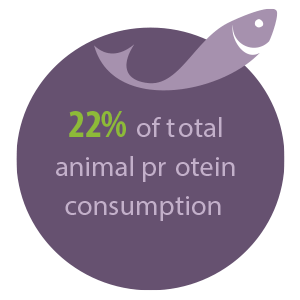
Fish is less expensive than other food sources such as red meat, making it more accessible to the poor, though certain species are in higher global demand, which drives up the prices.
⇰ Nine countries, all of which are located in the Global South, rely on fish for at least half of their population needs for animal protein.

Which are the main diseases that are a concern for the aquaculture industry and what are their consequences for fish health and productivity? Are these diseases a risk for human health?
There are several disease types affecting the aquaculture industry.
 Bacterial diseases caused by Aeromonas, Streptococcus, and Vibrio infections are of high importance in many cultured fish.
Bacterial diseases caused by Aeromonas, Streptococcus, and Vibrio infections are of high importance in many cultured fish.
⇰ These pathogens primarily cause septicemic disease in which fish appear off-food, lethargic, and sluggish, exhibiting redness on the skin and fin bases, ulceration, and abdominal distention in addition to postmortem lesions.
⇰ These signs affect fish health and result in increased losses, lowering productivity.
 These bacterial diseases can also pose a threat to human health.
These bacterial diseases can also pose a threat to human health.
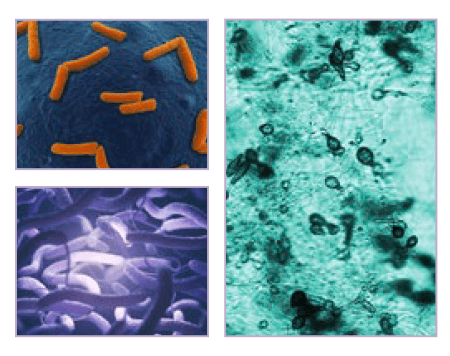
 Fungal infections, mostly secondary and represented by Saprolegnia, also can result in massive fish losses.
Fungal infections, mostly secondary and represented by Saprolegnia, also can result in massive fish losses.
 Viral infections are also present but are not yet prevalent in Egyptian fish farms. There is one mention of the Tilapia Lake virus but no evidence of other viral releases.
Viral infections are also present but are not yet prevalent in Egyptian fish farms. There is one mention of the Tilapia Lake virus but no evidence of other viral releases.


The occurrence of mycotoxins in animal feed is a major concern for the agricultural and farming sectors. To what extent are mycotoxins an issue in the aquaculture industry?
Mycotoxins have been identified as a problem in the aquaculture industry in recent years.
⇰ Feed manufacturers have responded by incorporating anti-mycotoxin measures into their feed production processes to avoid their detrimental effects on production, final product quality, and consumer safety.
 The lack of evidence of the negative effects of mycotoxins in aquatic species may be due to the absence of clinical signs directly related to mycotoxin ingestion, as opposed to terrestrial livestock species, where the effects are more pronounced.
The lack of evidence of the negative effects of mycotoxins in aquatic species may be due to the absence of clinical signs directly related to mycotoxin ingestion, as opposed to terrestrial livestock species, where the effects are more pronounced.
Which are the main mycotoxins that affect aquatic species and what are the consequences for their health and productivity? Are these mycotoxins frequently screened for?
Although Aflatoxins and Ochratoxins have been the most prominent mycotoxins in aquaculture, several others, such as Fumonisins, Zearalenone, Deoxynivalenol, and T-2 toxin, have been recently looked at as a source of health problems in fish.
 Mycotoxicosis is a term that refers to intoxications that occur in animals and humans due to the ingestion of one or more mycotoxins and can result in disease or death.
Mycotoxicosis is a term that refers to intoxications that occur in animals and humans due to the ingestion of one or more mycotoxins and can result in disease or death.
The primary health hazard associated with mycotoxin exposure is its chronic toxicity.
⇰ Chronic mycotoxicosis results in adverse effects that manifest after prolonged exposure to a low dose of mycotoxins (e.g., cancer induction, impaired growth, immune dysfunction, and so on), whereas acute mycotoxicosis occurs rapidly following exposure to a large dose of mycotoxin.
Symptoms of mycotoxicosis vary according to:
- ⇰ The type of mycotoxin
- ⇰ The amount and duration of exposure
- ⇰ The exposed individual’s age, health, and sex
- ⇰ Other factors such as genetics, dietary status, and interaction with other toxic compounds
These mycotoxins are screened frequently for imported commodities. However, strict regulation and monitoring are still needed to be put in action as lower levels than the recorded permissible ones can cause health hazards.

Is there a risk of mycotoxin carry-over to humans through the consumption of fish exposed to these toxins?
There is. However, different studies have revealed distinct patterns of mycotoxins bioaccumulation in fish tissues, which can be transferred to humans.
For instance, Aflatoxins pose a threat to human consumption, but the likelihood of Ochratoxin occurring in aquafeeds has been described as extremely low. Additionally, deposition of Deoxynivalenol and Fumonisins in tissues appears to be minimal.
While many important aquaculture species remain unexplored, it is clear that certain mycotoxins accumulate in the tissues of certain species.
⇰ It is necessary to keep in mind that the biotransformation of mycotoxin and its proclivity for deposition in tissues varies significantly among aquaculture species, depending on factors such as development stage, sex, exposure period, and rearing environment.

Among the negative effects of mycotoxins, immunosuppression is especially relevant as it reduces vaccine efficacy and opens the door to infections. Does this occur in fish? Have you perceived a higher proclivity to infectious diseases in fish exposed to mycotoxins?
Yes, this is possible in fish. Numerous studies have established that mycotoxins impair the immune system by inhibiting T- and B-lymphocyte activity, inhibiting antibody production, and impairing macrophage/ neutrophil effector functions.
This results in the vaccine being rendered ineffective and predisposes the animal to secondary bacterial infections.
 AFB1 at a dose of 5.0 mg/kg in common carp can result in an increased incidence of erythrodermatitis cyprini.
AFB1 at a dose of 5.0 mg/kg in common carp can result in an increased incidence of erythrodermatitis cyprini.
![]() Similarly, channel catfish fed a diet containing FB1 at a concentration of 20 mg/ kg have a higher mortality rate following infection with Edwardsiella ictaluri.
Similarly, channel catfish fed a diet containing FB1 at a concentration of 20 mg/ kg have a higher mortality rate following infection with Edwardsiella ictaluri.
 Zearalenone toxicity suppresses fish immunity and increases fish susceptibility to Vibrio alginolyticus infection, resulting in the highest fish mortality.
Zearalenone toxicity suppresses fish immunity and increases fish susceptibility to Vibrio alginolyticus infection, resulting in the highest fish mortality.


One of the lines of research you have been working on is the use of mycotoxin binders for the prevention of dietary mycotoxicosis in Nile tilapia. How does this strategy mitigate the effects of mycotoxin ingestion? Is it a common practice in the aquaculture industry?
Our research indicates that using a mycotoxin binder protects against mycotoxin adverse effects and helps maintain fish health.
Recently, this has been a common practice in feed mills where they add anti-mycotoxin additives in commercial diets.

With which final ideas would you like to leave our readers regarding your research on fish health and mycotoxin exposure prevention?
Feeding is the most expensive operation in a fish farm. Therefore, it is possible that lower-quality feed or feed ingredients contaminated with one or more mycotoxins will be used, posing a significant risk to animal and human health.
 Mycotoxin levels in feed ingredients and commercial feeds must be strictly regulated.
Mycotoxin levels in feed ingredients and commercial feeds must be strictly regulated.
Notably, our research discovered that levels lower than the allowable limit still cause immunosuppression and impair growth performance.
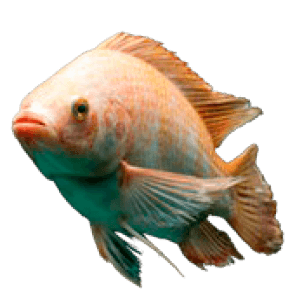
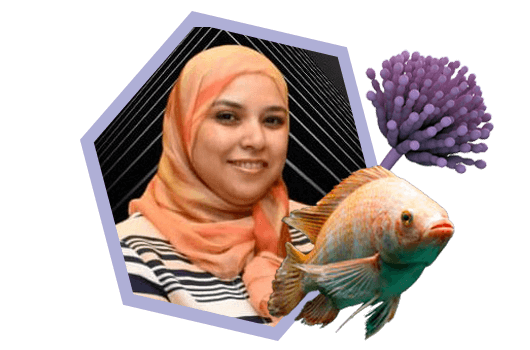
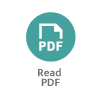


 Micotoxicosis prevention
Micotoxicosis prevention